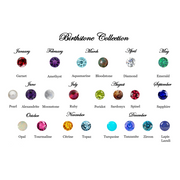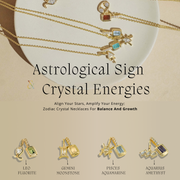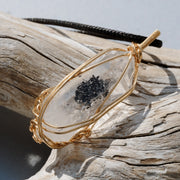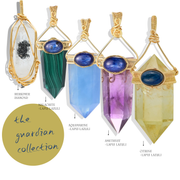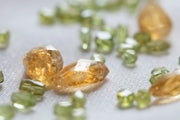Amethyst History
Ancient Origins
Amethyst, with its enchanting purple hue, has been prized for thousands of years as a stone of peace, wisdom, and protection. The name “Amethyst” comes from the Greek word amethystos, meaning “not intoxicated.” In ancient Greece, people believed the stone could prevent drunkenness and promote clarity of mind. Greek nobles even drank wine from amethyst cups, convinced it would keep them sober.
Amethyst was also revered in ancient Egypt, Rome, and Mesopotamia. The Egyptians used it for carved amulets and jewelry, while early Christian bishops wore amethyst rings to symbolize piety and humility. The stone was also mentioned in the Bible as one of the twelve stones in the breastplate of the high priest Aaron, representing divine wisdom and spirituality.

Cultural Significance
Throughout history, amethyst has been linked to royalty and spirituality. During the Middle Ages, it adorned the crowns of kings and queens, symbolizing divine right and moral strength. Tibetan monks considered it sacred to Buddha, using it in prayer beads to enhance focus and enlightenment. Across cultures, amethyst’s deep violet shades have represented inner calm, transformation, and connection to higher consciousness.

Symbolic Uses Through History
Amethyst has always symbolized peace, clarity, and divine protection. It’s regarded as a stone that transforms negative energy into positive vibration, helping individuals achieve balance and serenity. Its calming influence makes it one of the most cherished crystals for meditation, intuition, and spiritual awakening.

Table of contents

Origin
Brazil – The largest source of amethyst, producing large, gem-quality crystals in shades from pale lavender to deep violet.
Uruguay – Known for darker amethyst with intense saturation and a strong royal-purple tone.
Zambia – Produces high-quality amethyst with a rich, bluish-violet hue and remarkable clarity.
Russia (Ural Mountains) – Famous for historical specimens used in royal jewelry and religious artifacts.
Feature
Chemical Formula: SiO₂ (Silicon Dioxide) — Amethyst is a variety of quartz colored by trace amounts of iron and natural radiation.
Mohs Hardness: 7 — relatively hard and suitable for most jewelry, though care should be taken to avoid scratches.
Color: Ranges from pale lilac to deep royal purple. The intensity of color depends on the amount of iron and manganese present. Some amethysts display zoning—variations of color within the same crystal—adding to their unique beauty.
Symbolism: Amethyst symbolizes peace, protection, and spiritual awareness. It calms the mind, balances emotions, and enhances inner wisdom.
-
Chakra:
Third Eye Chakra (Ajna): Promotes intuition, insight, and clarity of thought.
Crown Chakra (Sahasrara): Enhances spiritual connection, awareness, and enlightenment.
-
Zodiac:
Pisces
Virgo
Benefits
Calmness and Stress Relief
Amethyst is known as the “Stone of Tranquility.” Its soothing energy helps calm anxiety, stress, and emotional turbulence. It encourages inner peace and serenity, making it a powerful aid for meditation, sleep, and emotional balance. Keeping amethyst nearby promotes relaxation and mental clarity in times of confusion or distress.
Spiritual Awareness and Intuition
Amethyst enhances intuition and spiritual insight by opening the Third Eye and Crown Chakras. It helps connect the mind to higher consciousness, fostering deep meditation and self-awareness. Many spiritual practitioners use amethyst to enhance psychic abilities, channeling, and connection to divine energy.
Protection and Cleansing
In ancient times, amethyst was believed to ward off evil thoughts and protect against spiritual harm. It cleanses negative energies from the aura, environment, and emotional body, promoting harmony and balance. As a protective crystal, it’s ideal for shielding against electromagnetic stress and psychic interference.
Addiction Recovery and Mental Clarity
Amethyst’s historical association with sobriety extends beyond alcohol—it symbolizes freedom from addictive patterns and negative thought cycles. It supports clarity of mind, focus, and self-discipline, making it a helpful companion for breaking unhealthy habits and fostering mindful living.
Love and Emotional Balance
Amethyst nurtures compassion, patience, and understanding. It helps soothe emotional wounds, promoting forgiveness and empathy. In relationships, it strengthens trust and communication, allowing love to flow freely without fear or resentment.
Physical Healing
In holistic healing, amethyst is believed to strengthen the immune system, improve circulation, and alleviate headaches or insomnia. It is often placed under a pillow to promote restful sleep and ward off nightmares. Its calming vibration supports hormonal balance and overall vitality.
Type
Deep Siberian Amethyst
The most valuable variety, known for its rich purple hue with flashes of blue and red. It symbolizes wisdom, clarity, and spiritual protection.
Rose de France Amethyst
A light lavender variety that exudes gentleness and peace. It’s perfect for emotional healing and self-love practices.
Chevron Amethyst
Characterized by distinctive V-shaped bands of white quartz and purple amethyst. It combines the energies of clarity and intuition, making it excellent for meditation and decision-making.
Vera Cruz Amethyst
Found in Mexico, this transparent variety emits a high vibration, promoting spiritual ascension and energy cleansing.
Brandberg Amethyst
From Namibia, it often includes smoky quartz or clear quartz formations, blending grounding and uplifting energies for deep spiritual healing.
Care & Maintenance
Cleaning
Clean amethyst gently with warm water, mild soap, and a soft cloth. Avoid ultrasonic or steam cleaners, as heat can cause fading or fractures.
Storage
Store amethyst separately from harder stones to prevent scratching. Keep it away from direct sunlight, as prolonged exposure may fade its color.
Handling
Handle amethyst with care and avoid contact with harsh chemicals, including household cleaners and perfumes. To recharge its energy, place it under moonlight or on a selenite charging plate overnight.
FAQs
Q: Is Amethyst a birthstone?
A: Yes, Amethyst is the traditional birthstone for February, symbolizing peace, clarity, and protection.
Q: Does Amethyst fade in sunlight?
A: Yes, direct sunlight can lighten amethyst’s color over time, so it’s best to store it away from UV exposure.
Q: What does Amethyst symbolize spiritually?
A: Amethyst represents spiritual wisdom, inner peace, and higher consciousness. It promotes clarity, intuition, and divine connection.
Q: Can Amethyst help with sleep?
A: Yes, placing amethyst near the bed or under the pillow is believed to reduce insomnia and encourage peaceful dreams.
Q: Is Amethyst rare?
A: While amethyst is relatively abundant, high-quality stones with deep color and clarity are rarer and more valuable.
Final Thoughts
Amethyst: Benefits, Properties and Meaning of the Stone reveals why this gemstone has remained a timeless favorite for centuries. With its serene purple glow, Amethyst embodies peace, wisdom, and transformation. It quiets the mind, shields the spirit, and uplifts the soul—guiding us toward balance and inner harmony. Whether worn as jewelry, placed in a meditation space, or used in healing rituals, Amethyst radiates calm and clarity, reminding us that strength comes from serenity. A true “Stone of Spiritual Light,” Amethyst continues to inspire calmness, clarity, and connection in every heart it touches.

